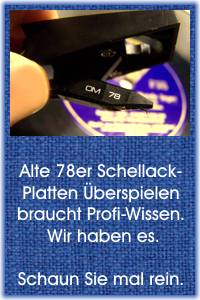Erläuterungen zu diesen 1948er US-AUDIO Seiten
Die hier stehenden amerikanischen Artikel aus 1948 (aus der US-AUDIO) sind teilweise sehr gewöhnungsbedürftig, weil sie erstens aus einer längst vergangenen Zeit stammen und zweitens, weil dort in den USA ganz "anders" gedacht wurde als bei uns in Old Germany oder in Europa.
Vergleichbar mit unseren deutschen Hifi-Magazinen etwa ab 1962 ist jedoch, daß auch diese Zeitschrift ihre Anzeigen- Kunden und -Leser (be- oder ab- ?) werben mußte.
Die Ausgaben der US-AUDIO von 1947 bis 1958 liegen in teilweise ganz miserablen PDF-Dateien vor, in denen die Reihenfolge der Seiten teils völlig wirr ist. Der Aufwande, einen einzigen Artikel komlett zusammenzubauen, ist daher erheblich. Die Fotos sind so gräuselig schlecht, daß sie nur in Ausnahmefällen eingebaut werden.
.
EDITOR'S REPORT
CN $100,000 - (Wieder etwas Eigenlob)
• OUR friend F. Sumner Hall recently phoned to tell us that a salesman had just returned from the Orient with a copy of Audio Engineering, purchased at a bookseller's shop in Shanghai. The price per copy - two months ago - 100,000 in Chinese national currency.
WIDE RANGE REPRODUCTION
• FROM W. S. Barrell, director of recording at E.M.I, in England, comes a letter taking issue with our popular record reviewer, Bertram Stanleigh, who stated that the new English TT (transient true) recordings, which are stated to include frequencies up to 20,000 cycles, are "HMV"'s answer to the Decca "ffrr" recordings, introduced about two years ago.
Mr. Barrell points out that he and an associate were the first to demonstrate wide-range recording, before the "Institution of Electrical Engineers", in 1944. In this demonstration, frequencies up to 12,000 cycles were directly recorded and reproduced. Mr. Barrell goes on to say that this was the first time that such wide-range recording had been done, not only in England, but perhaps in the entire world.
Of course, Mr. Stanleigh did not say that Decca was the first to demonstrate wide-range recording; he merely pointed out that Decca had "ffrr" records on the market two years ago, whereas "HMV" had made no wide-range records available until now. Checking up on work done in this country, we found that F.V. Hunt had reproduced frequencies in excess of 12,000 cycles some 11 years ago, but the recording had been done at lower frequencies.
Actually, the records were recorded at 33 1/3rd rpm and reproduced at 78 rpm. Insofar as present recording practice here is concerned, an engineer of one of the largest companies states that they often record up to 12,000 cycles, but they don't make a fuss (keinen Wirbel) about it.
Maybe so, maybe not, say their competitors. Some engineers claim that an illusion of better fidelity and wider range is often created by using a very "live" studio, but actually the frequency range isn't unusually wide, and that recordings so made often attain wide popularity and prestige for wide-range qualities they don't possess. From our standpoint, it would seem that if recordings so made really do sound so much better (and we think they do), why don't more recordists use this technique? When it is combined with really wide-range recording, it ought to produce records of really extraordinary quality.
WITH OUR AUTHORS
• Now that our printer is gradually catching up on his schedule, Audio Engineering should reach you much earlier in the month from now on. We hope, within two months, to have each issue in the mails on the first of the month. There are plenty of interesting articles now in the works.
Our managing editor, C.G. McProud, has just finished an excellent a-m tuner with extremely low detector distortion which will be a worthy companion piece to the 6AS7 amplifier.
Another amplifier with exceptionally low inter-modulation distortion, and with 30 watts power output, will also be described soon. This article will come from Stromberg-Carlson.
Winston Wells is completing his next article on electronic organs, which have been considerably delayed because of his ill health. S. Young White has another outstanding article on ultrasonics, which was squeezed out of this issue.
There is more coming on loudspeaker design, an article on a three-way system, a corner-of-the-room two-way system, and a special speaker layout to give better results from the sound end of TV sets. Practically nothing has appeared in any engineering periodical on record processing. Next month Harold Harris will break the ice with an easily understandable, but authoritative, discussion of the manufacture of phonograph record matrices. Bertram Stanleigh will return with his column reviewing popular records, which missed the deadline for this issue.
J. H. P.
.

